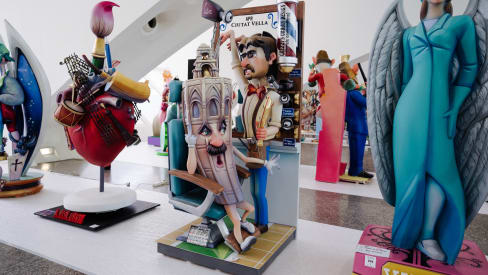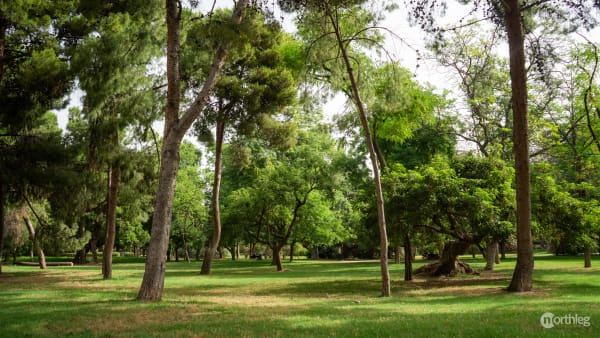What’s a ninot
What’s a ninot
It’s important to point out that the term ninot is not interchangeable with the term falla. While the latter is a complete monumental composition representing a scene, the former is a figure that is part of said scene.
Ninot is in fact Valencian for doll. It is an individual, free-standing figure, usually in the shape of a popular character or famous person. This is often with satirical intent over current socio-cultural or political events. These figures are designed and built by the same artists that build the rest of the fallas.
Normally, ninots are burned during the Cremà with the rest of the falla monuments they are part of. However, every year, an exhibit is held in which some ninots are pardoned from the fire because of their artistic value and their success with the public.

Origins
The ninots’ origins (and consequently those of the fallas themselves) bring us back a few centuries. Back then, on the occasion of Saint Joseph’s day, Valencian carpenters used to burn the lanterns they wouldn’t need in the upcoming spring and summer days.
The workers used to set up their parots (the lantern poles used to illuminate their workshops in the winter months) in the street, surround them with the wood shavings they didn’t need, and burn everything.
Over the years, carpenters started getting creative with their compositions, dressing the parots in such a way that they would satirically resemble local celebrities or members of the ruling class. The parots thus became ninots (meaning doll, in Valencian).

Materials
Ninots were initially wax and wooden dummies dressed up with fabric scraps or old clothes. Over time, the techniques and materials changed, allowing for the typically expressive and exaggerated features and postures to be added.
In the 1950s, the ninots were created from processed cardboard and papier-mâché. In the 1960s polyester became popular and in the 1980s it started being replaced by expanded polystyrene.
Nowadays, artists try to experiment and use more environmentally-friendly materials, but the bigger and more voluminous ninots are still made of expanded polystyrene (also called white cork), as it is extremely lightweight and durable.
















